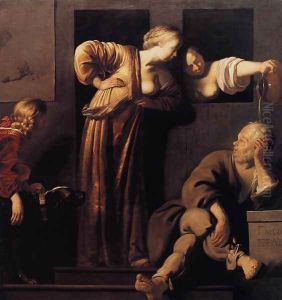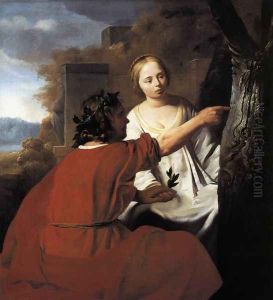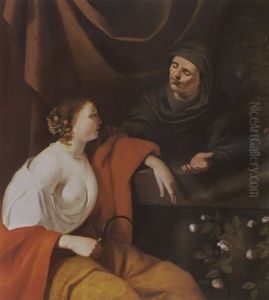Reyer van Blommendael Paintings
Reyer Jacobsz van Blommendael, born in 1628, was a Dutch Golden Age painter known for his exquisite genre scenes, portraits, and historical allegories. Although not as widely recognized as some of his contemporaries, van Blommendael made a considerable contribution to the artistic landscape of the 17th century with his finely detailed and often opulent works.
Van Blommendael was likely born in Utrecht, a city that was, at the time, a thriving artistic center in the Netherlands. He was the son of Jacob Gerritsz van Blommendael, who was also a painter, though not much is known about his father's influence or the extent of their collaboration, if any. Reyer received his training from an Utrecht painter, although the exact identity of his teacher is unclear. Some sources suggest that he may have been a student of Abraham Bloemaert, a prominent Utrecht painter known for his influence on the Utrecht Caravaggisti, a group of artists who blended local traditions with the dramatic style of Caravaggio.
Throughout his career, van Blommendael developed a style characterized by a keen attention to texture and detail, particularly in his renderings of luxurious fabrics and still-life elements within his compositions. His genre scenes often depicted elegantly dressed figures in moments of leisure or amorous pursuit, reflecting the tastes and interests of the wealthy Dutch middle class who were his primary patrons.
Despite his skill, van Blommendael did not achieve the same level of fame as some of his contemporaries. The reasons for this are not entirely clear, but it may be due in part to the sheer number of talented artists working in the Netherlands during this period, which made the artistic landscape highly competitive.
Reyer van Blommendael's works occasionally appear in art auctions and collections today, offering glimpses into his refined aesthetic and the cultural milieu of 17th-century Utrecht. His paintings continue to be appreciated for their elegance and intricate detail, though his name remains relatively obscure compared to the leading lights of Dutch Golden Age painting.
Van Blommendael died in 1675, leaving behind a legacy that, while modest in comparison to the great masters of his time, still offers valuable insights into the diversity and richness of Dutch painting during one of its most flourishing periods.


